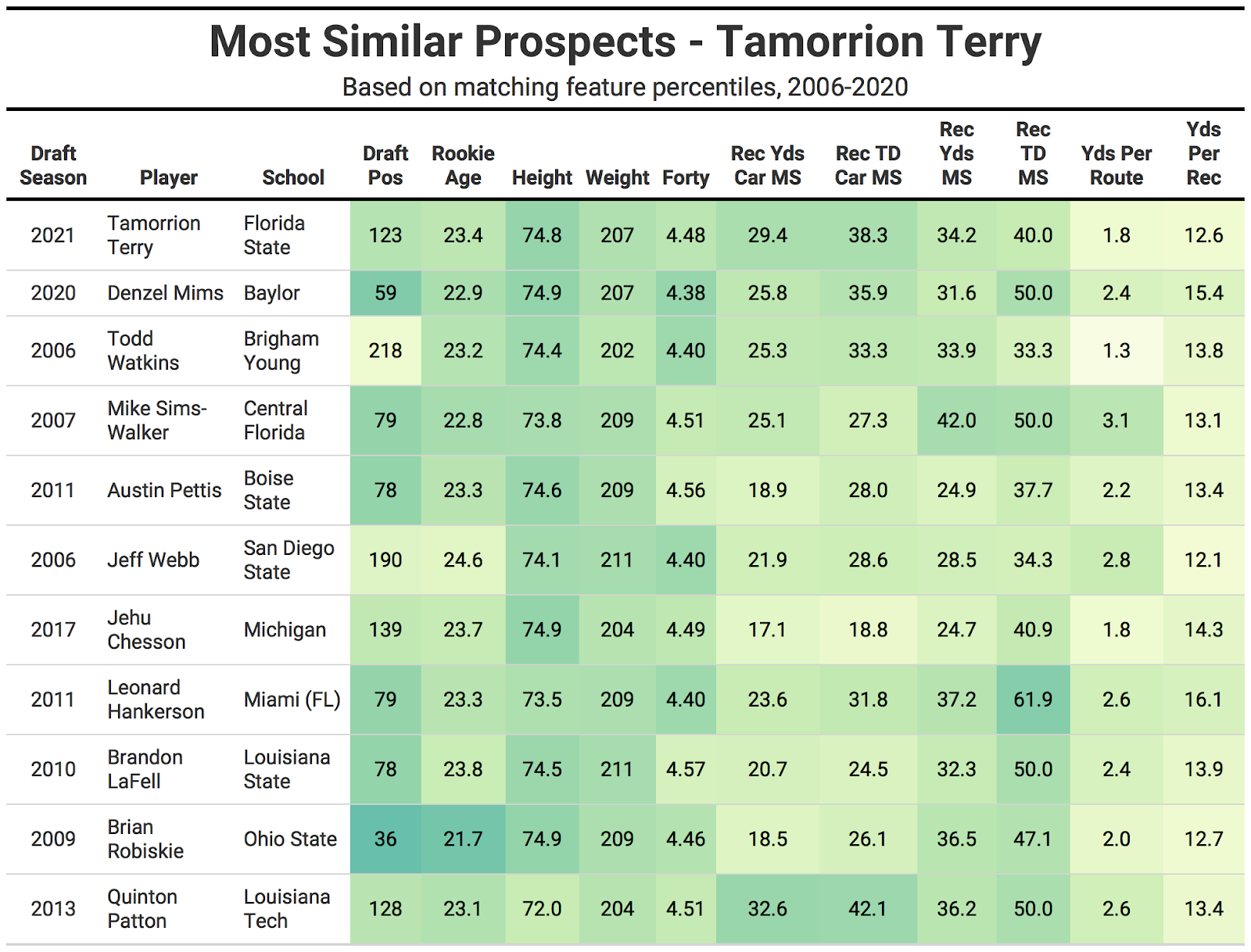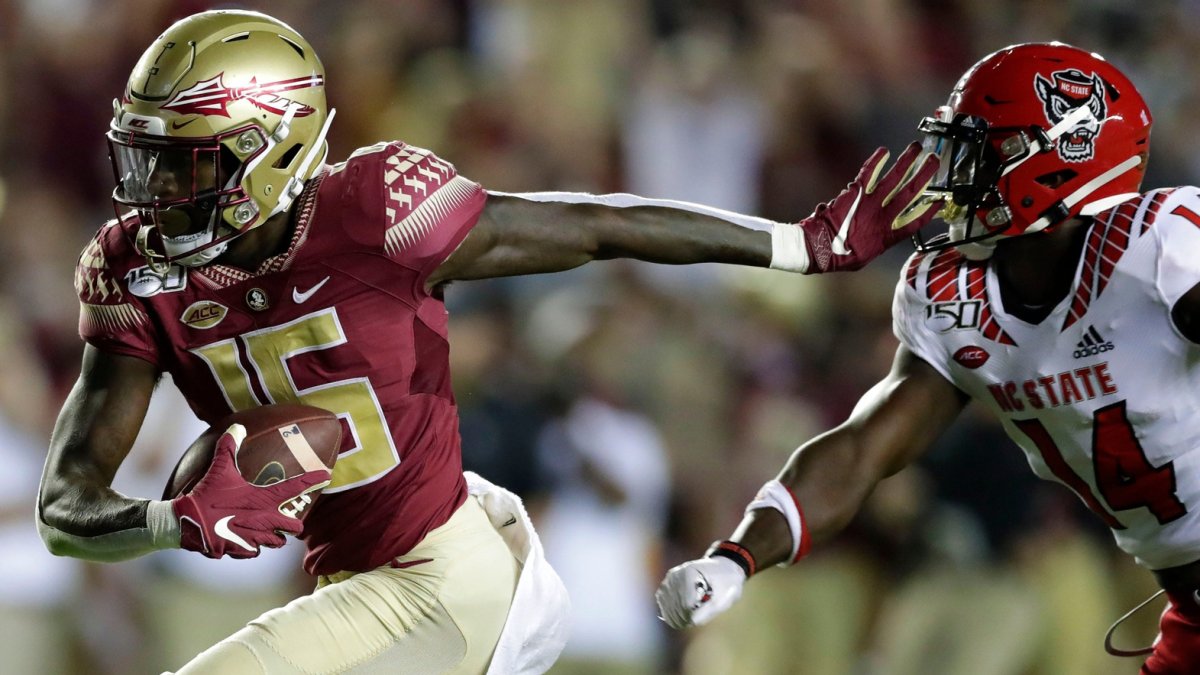Comparing current NFL draft prospects to those of years past is standard procedure in draft evaluation, though most comparisons are built on the memory recall and subjective opinion of the particular evaluator.
This will be the first in a series of articles comparing the 2021 draft prospects to prior years and picking out the most similar comps with a clearly delineated and quantifiable method.
PFF data scientist Eric Eager has done tremendous work building college-to-pro projections, which are built off the robust college data we’ve collected since 2014 and have been applied to exercises like building an “Analytics” Mock. In this analysis, I will use some of our advanced stats for comparison but primarily rely on traditional stats to go back further to compare the 2021 prospects to draft classes going back to 2006.
Without the NFL Scouting Combine this season, the important measurables like weight and 40-yard dash will be reported through the various pro days that will be taking place over the next few weeks.
METHODOLOGY
The comps below were derived from a two-step process. First, I converted all the most statistically relevant stats and measurables to percentiles based on the thousands of prospects who have entered the NFL since 2006 at each position. Then, I filtered the total universe of past prospects by those who had draft positions, weight and 40 times within a 10th percentile in either direction of Tamorrion Terry. For undrafted players, I assigned a numerical draft position of 300.
The rest of the matching features were transformed by principal component analysis (PCA). I found the closest statistically comparable players by the euclidean distance between the players' principle components, listed in the top 10 below.
The metrics for PCA are: rushing attempts per game, rushing yards per game, rushing touchdowns per game, receptions per game and market share of team receptions. All of these data points come from the prospect’s best collegiate season. I also matched the prospect’s market share of total team yards and touchdowns to past draft prospects.
For Terry's draft position, I’m using an estimate based on the mock data collected at GrindingTheMocks.com. For weight and 40 time, I’m using the numbers from his pro day, with a 0.03-second penalty added to the 40 time to reflect the uncertainty of pro-day timed measurements.
Most comparable players
Terry was a big-play receiver in 2019 before seeing his production dip in his final season.
He displayed athleticism at his pro day, running a 4.45-second 40-yard dash at 207 pounds. He also posted a 10-foot-6 broad jump and hit seven seconds flat in the three-cone drill.
Florida State WR Tamorrion Terry averaged 57.8 yards per catch on his 9 TDs last season.
Highest of all CFB players with 3+ TDspic.twitter.com/EUcW7th64W
— PFF College (@PFF_College) May 15, 2020
Athleticism is less important for projecting wide receiver success, but it can have a major impact on draft position.

I was surprised by the lack of quality in Terry’s comps, given his good athleticism and stronger career market share numbers.
Expected draft position and age are likely holding him back, as most successful NFL receivers are taken much earlier than his expected draft position of 123 and are younger than 23 years old entering the NFL. Terry leaves with a year of eligibility — a good sign — but wasn’t a true junior in his final season after redshirting his first college year.
Exclusive content for premium subscribers

WANT TO KEEP READING?
Dominate Fantasy Football & Betting with AI-Powered Data & Tools Trusted By All 32 Teams
Already have a subscription? Log in



 © 2025 PFF - all rights reserved.
© 2025 PFF - all rights reserved.